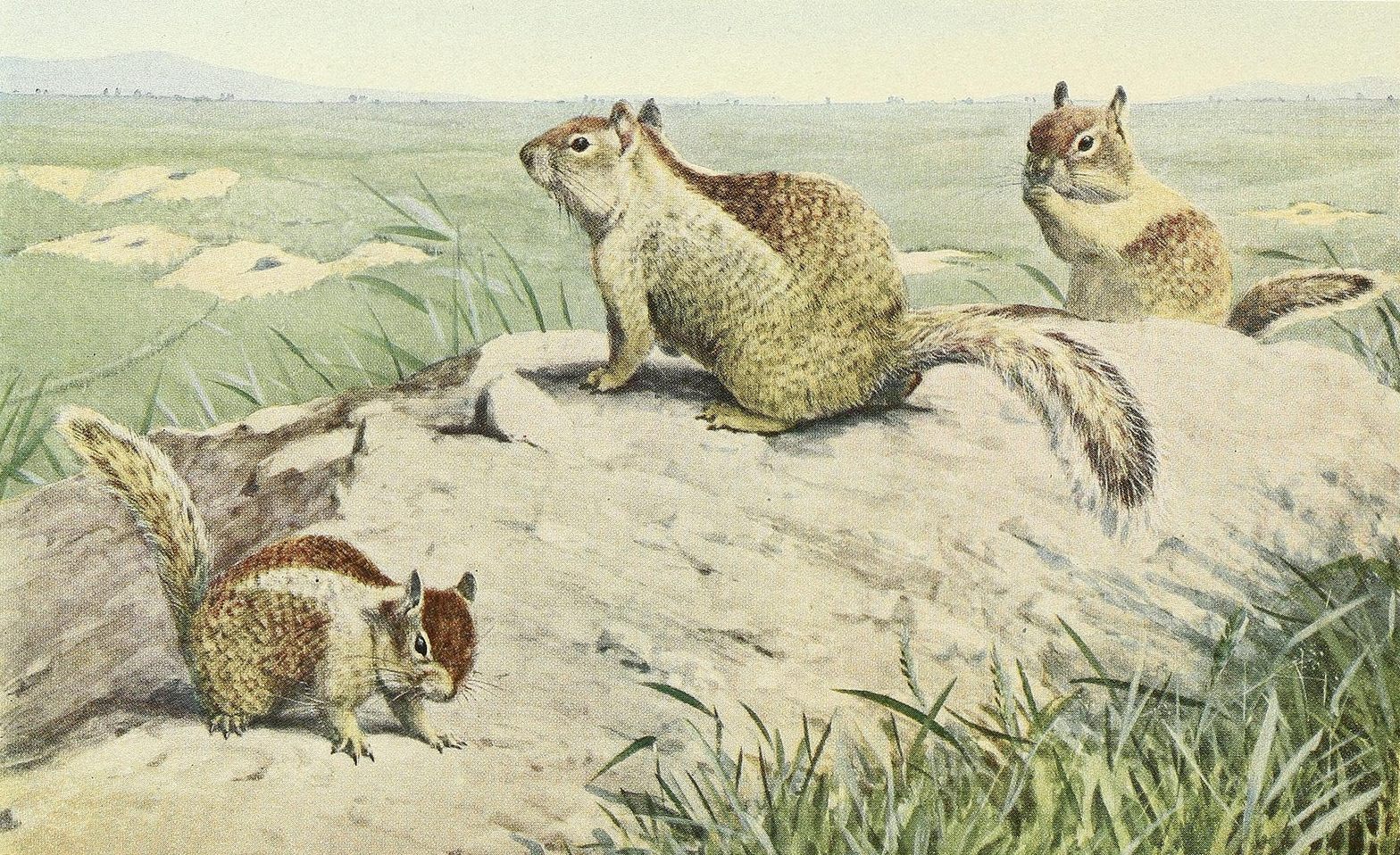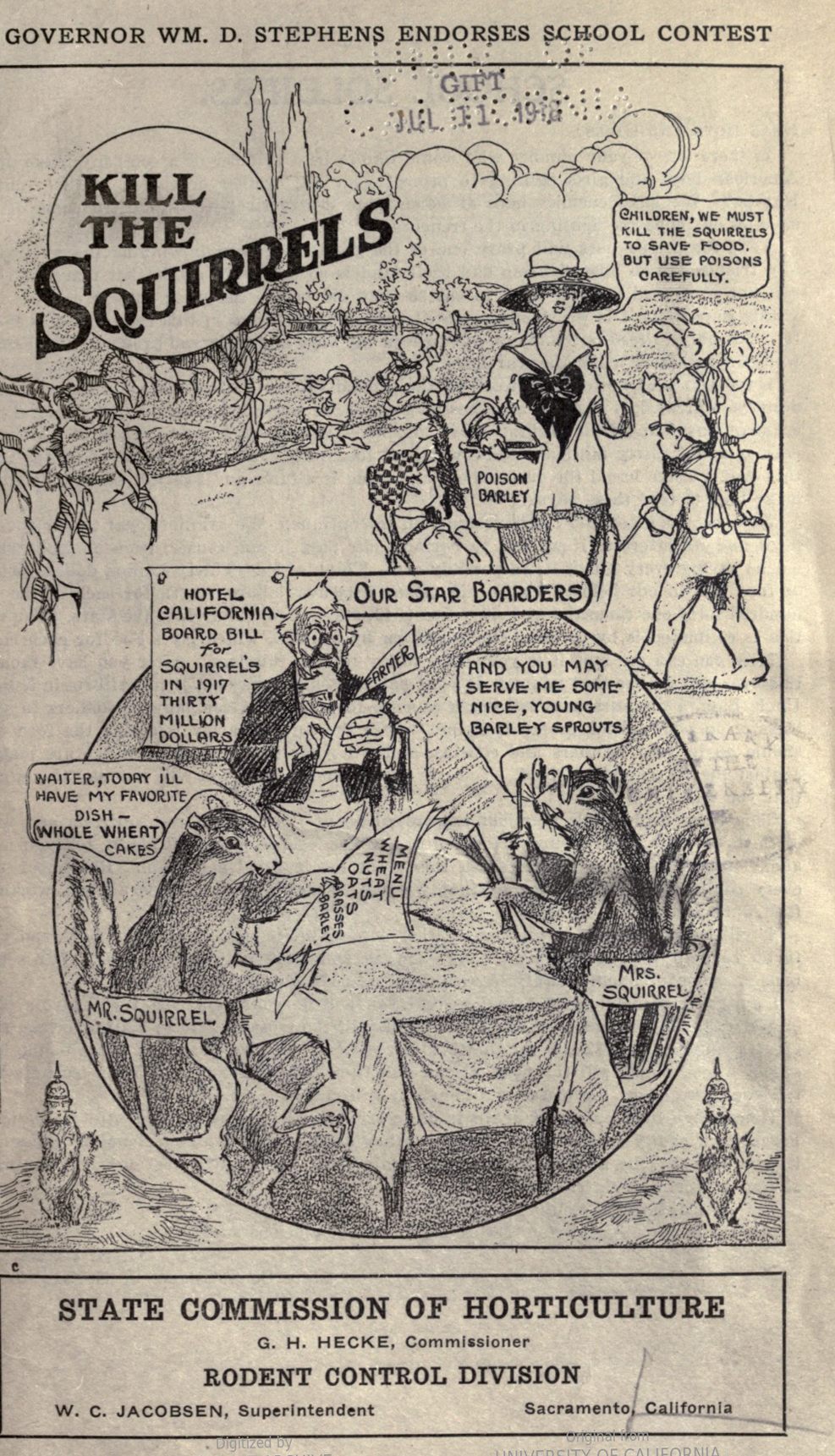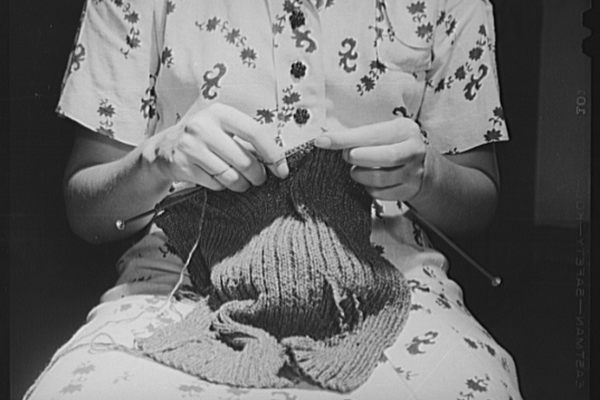In 1918, California Drafted Children Into a War On Squirrels
There were over 100,000 casualties.

In April 1918, as American doughboys faced down the Germans in France, California’s schoolchildren were enlisted to open a new Western Front. “We have enemies here at home more destructive, perhaps, than some of the enemies our boys are fighting in the trenches,” state horticulture commissioner George H. Hecke warned in an impassioned call-up for “School Soldiers.” He exhorted children to do their part for Uncle Sam by organizing “a company of soldiers in your class or in your school” and marching out to destroy their foe: “the squirrel army.”
This children’s crusade was part of Squirrel Week, a seven-day frenzy in which California tried to kill off its ground squirrels. The state’s farmers and ranchers had long struggled to decimate the critters (also known as Otospermophilus beecheyi), which were seen as pests and a source of pestilence, particularly the bubonic plague. The burrowing foragers—not to be confused with tree squirrels—devoured an estimated $30 million worth of crops annually, about $480 million in current dollars.

Squirrel Week was the state’s first attempt at mass eradication. The anti-rodent campaign was announced in March 1918 at a meeting of the state’s horticultural commissioners as they lunched on grain-fed gophers. (“Liberal portions of beef were served to those who did not like gopher meat,” reported the San Francisco Chronicle.)
California set aside $40,000 from its emergency wartime funds for the campaign, which included an anti-squirrel publicity blitz: the state printed up 34,000 posters and distributed 500,000 leaflets.

What made Squirrel Week unique was its reliance on kids to succeed where adults had failed. Hecke’s call to arms appeared in a pamphlet titled “Kill the Squirrels,” which sought to stir patriotic youngsters to sprinkle rodenticide outside squirrel burrows. In the pamphlet’s opening illustration, a young woman holding a pail of poison barley invites eager kids to get to work.
“Children, we must kill the squirrels to save food,” she smiles. “But use poisons carefully.” The pamphlet included a recipe for strychnine-laced grain as well as suggestions for other extermination methods, such as shooting, drowning, and poison gas.
Just in case civic duty wasn’t motivation enough, there were also rewards: $50 ($800 today) to each of the elementary and high schools whose pupils killed the most squirrels, and $30 and $20 to the runners-up.

California’s war on squirrels was framed as an extension of United States’ declaration of war on Germany a year earlier. Part of this was practical: Future president Herbert Hoover, then the United States Food Administrator, offered his “hearty approval” of the effort to save “vast quantities of food which might otherwise be used for support of our armies abroad.”
But it also made for great propaganda. In the corners of the “Kill the Squirrels” cartoon, two members of the squirrel army stood at attention, wearing Pickelhauben—the distinctive spiked helmets of the German army. Another Squirrel Week poster showed a Teutonic squirrel family wearing spiked helmets and Iron Crosses. The father squirrel sported an oddly upturned mustache—just like Kaiser Wilhelm’s.
An article about Squirrel Week in the Lompoc Journal took the martial theme and ran with it, hailing the “growing army” amassing “casualties” in “initial engagements” against the enemy. “All the killing devices of modern warfare will be used in the effort to annihilate the squirrel army, including gas,” it continued. “Don’t wait to be drafted.”

The campaign also enlisted the help of Four-Minute Men—volunteers who delivered short speeches to rally public support for the war effort. Anti-squirrel talking points were issued so they might convince farmers and ranchers to go out and kill the “little ally of the [K]aiser”:
- The BEST squirrel is the dead squirrel.
- The Hotel California board bill for ground squirrels in 1917 […] was $30,000,000—yet unpaid.
- The squirrel does not recognize daylight saving. He uses it all.
- He preys on our crops in countless hordes. He fills the ranks of the killed in true military fashion.
- Why hesitate? We can get ‘em. How? Poison ‘em, gas ‘em, drown em’, shoot ‘em, trap ‘em, submarine ‘em.
- Are you not willing then to give your whole-hearted support to this state-wide movement to KILL THE SQUIRREL?

Children were asked to verify their kills by bringing in squirrel tails to their schools. Some impatient exterminators delivered their trophies directly to Commissioner Hecke even before Squirrel Week kicked off, causing a “pronounced odor” in his office. He requested that children not send him any more tails, and instructed his county commissioners to bury all tails after tallying them.
By the time Squirrel Week ended on May 4, children across the state had turned in 104,509 tails, though this was thought to represent a fraction of the total casualties. Even after the contest ended, the Commission of Horticulture reported that kids’ enthusiasm for killing squirrels continued for “an indefinite period.” During an anti-squirrel campaign in Lassen County later in the year, one girl brought in 3,780 tails; a boy brought in 3,770.

The state considered Squirrel Week a great success: Crop yields reportedly bounced back in areas cleared of ground squirrels. But total victory remained elusive. Nearly a century later, ground squirrels and are still considered prolific, expensive pests.
The militaristic edge of the squirrel war of 1918 hasn’t entirely faded: A contemporary University of California web page about the damage caused by ground squirrels features an image of a squirrel wearing a helmet and taking aim with a bazooka. All is not quiet on this Western Front.
















Follow us on Twitter to get the latest on the world's hidden wonders.
Like us on Facebook to get the latest on the world's hidden wonders.
Follow us on Twitter Like us on Facebook